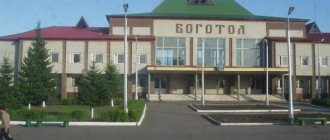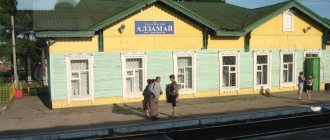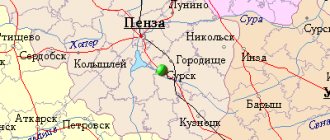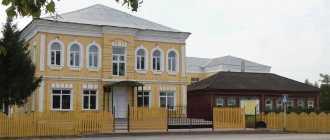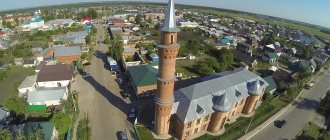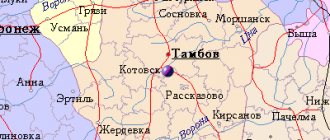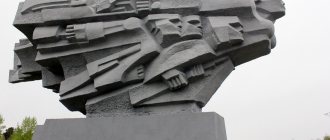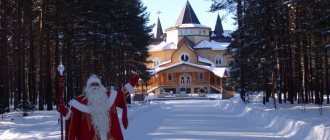More about the districts of the Saratov region here.
Ershov is a small town in the Saratov region, located at the source of the Maly Uzen River. The distance from the regional capital, the city of Saratov, to Ershov is 180 km. Ershov occupies an area of 343 square meters. km.
The first mention of human settlements in this area dates back to the mid-18th century. According to the decree of Catherine the Second, people from all over Ukraine and the central part of Russia came here to develop new lands.
Those who were guilty and unwanted were also sent into exile here. For example, for supporting the Poles in the uprising, some Lithuanians were exiled here. Due to the mixing of blood, you can still often meet people of European appearance here - blond, almost white hair combined with transparent blue eyes.
There is one interesting version of the origin of the city's name. The engineer who was entrusted with the construction of the station bore the surname Ershov. As expected, the engineer hired workers from the surrounding villages. The following dialogue often took place between builders during a meeting:
-Whose will you be?
- Ershov.
And so it happened. Subsequently, everything that was built here began to be called Ershov.
Now the ruff is officially placed on the city’s coat of arms.
Coat of arms of the city of Ershov in the Saratov region
According to official data, the city's population today is about 20 thousand people. But once upon a time Ershov was a small settlement that formed near the station of the same name.
In just a hundred years, Ershov has turned into a modern administrative center with developed infrastructure, industrial enterprises and its own television.
Ershov was founded in 1893 in connection with the construction of the Ryazan-Ural railway. Already in 1904, the first school appeared here. This fact perfectly confirms the rapid population growth of the then small village.
In 1923, the first library appeared (at the moment there are two), and a few years later the first newspaper “Leninsky Put” was published.
In 1928, Ershov acquired the status of a district center, and since 1963, it has been included on the map of Russia as a city.
From 1936 to the present day, Ershov has been part of the Saratov region. Previously, the village was listed as part of the Samara province.
At the moment, the city is one of the main road and railway hubs in Russia. The paths diverge in all directions.
Trains go to Saratov and Moscow, in the opposite direction to Central Asia, Siberia and the Urals. They also head towards Balakovo and Pugachevo, two more large administrative centers of the region.
Construction of the locomotive depot began at the end of the 19th century. At the same time, the construction of workshops began to eliminate minor problems with rolling stock. Already in the first years of the 20th century, more than 10 thousand passengers and about 12 tons of various cargo departed from the station.
Nowadays, at the Ershov station there is already a large locomotive depot and a full-fledged car repair shop with a large number of workshops.
The agricultural sector plays a significant role in the city's economy. More than 60 private farms and 18 state agricultural enterprises are officially registered in the Ershovsky district.
The priority area of agriculture is livestock farming, a smaller share falls on crop production.
There are several mineral springs and crushed stone deposits in Ershov.
In the city itself and its surroundings there are several large industrial enterprises of a state scale. For example, the main base for the manufacture and repair of agricultural machinery and equipment, the Ershovskaya base is engaged in the production of agricultural products and equipment, Promstroyinvest LLC is a brick production plant, and Alliance-Nedra LLC is engaged in the extraction and processing of crushed stone.
Nowadays, Ershov is a small but quite modern industrial city. There is everything for a comfortable stay here. Ershov has about 40 kindergartens, more than 20 schools, music and sports schools, various clubs and sections for children and adults, it has its own house of culture and creativity, a cinema and libraries. The city has several technical schools and a branch of Saratov University.
The local history museum requires a separate description. It is located in the building of the Palace of Pioneers. In appearance, this is an unremarkable two-story panel house, but when you go inside, you seem to find yourself back in time, a hundred years ago.
Everything here is imbued with the spirit of antiquity. In addition to household items of the first settlers, old photographs and maps, there are some very interesting exhibits.
For example, the suitcase with which Vasily Kuzmich Stepin, one of the first settlers of the city, arrived. Vasily Kuzmich came to settle in new lands together with his entire family and a trust document, which was presented at the request of the gendarmerie, and gave the right to build a house, work and settle legally.
The director of the museum, Olga Fedotova, also deserves special attention. On one of the walls of the museum hangs a photo of her grandmother, who was married off at the age of sixteen. The husband was as old as he was rich.
The continuation of this intriguing story can be heard from Olga Fedotova herself, if you ask about it.
The museum is generally more inclined to preserve the chronicles of life and memoirs of the Ershovites themselves, their so different: complex and not so complex destinies.
What other places can you visit and see in the city?
The central city square is also quite worthy of attention. In the center, as in most other Russian cities, there is a monument to the leader of the proletariat, V.I. Lenin.
The square is very beautifully and harmoniously organized and fits into the overall city flavor. There is a pedestrian area for walking.
Another interesting architectural monument is the “House of Gentlemen Machinists”. If you have free time, you can arrange a short free excursion.
You can visit the railway museum, which is located on the territory of the locomotive depot.
Content
- 1 About the surname
- 2 Ershev
2.1
XVII-XIX centuries - 2.2 Privileged class
- 2.3 Unprivileged class
- 2.4 XX century
- 2.5 Ershev.Geography
of residence - 2.6 Sources:
- 3.1 XVII-XIX centuries
of residence
Links[edit]
Notes[edit]
- ^ abcd Law No. 78-ZSO establishes that the boundaries of administrative districts are identical to the boundaries of municipal districts. In Law No. 82-ZSO, which defines the boundaries and composition of the Ershov municipal district, the city of Ershov is included in this municipal district. Law No. 21-ZSO does not list any types of administrative units below the district level.
- ^ a b Federal State Statistics Service (2011). All-Russian Population Census 2010. Volume 1 [All-Russian Population Census 2010, vol. 1]. All-Russian Population Census 2010 [All-Russian Population Census 2010] (in Russian). Federal State Statistics Service.
- "26. The size of the permanent population of the Russian Federation by municipalities as of January 1, 2022". Federal State Statistics Service. Retrieved January 23, 2022.
- ^ ab State Committee of the Russian Federation on Statistics. Committee of the Russian Federation for Standardization, Metrology and Certification. No. OK 019-95 January 1, 1997 “All-Russian classifier of objects of administrative-territorial division. Code 63 217", ed. changes No. 278 / 2015 dated January 1, 2016. (Goskomstat of the Russian Federation. Committee of the Russian Federation for Standardization, Metrology and Certification. No. OK 019-95 January 1, 1997. Russian classification of administrative divisions) (OKATO).
Code 63 217 , as amended by Amendment No. 278/2015 of 01/01/2016). - ^ abcd Law No. 82-ZSO
- Law No. 78-ZSO
- "On the Calculation of Time". Official Internet portal of legal information
. June 3, 2011. Retrieved January 19, 2022. - Post office. Information and computing center of OASU RPO. ( Post office
).
Search for postal service objects ( postal Search for objects
) (in Russian) - ↑
Federal State Statistics Service of Russia (May 21, 2004). The population of the Russian Federation as part of federal districts, urban settlements. [Population of Russia, its federal districts, constituent entities of the Federation, districts, urban settlements, rural settlements - administrative centers and rural settlements locations with a population of more than 3,000 people] (XLS). All-Russian Population Census of 2002 [All-Russian Population Census of 2002] (in Russian). - All-Union Population Census of 1989 Population of Union and Autonomous Republics, Autonomous Regions and Districts, Territories, Regions, Urban Settlements and Village District Centers [All-Union Population Census of 1989: Current Population of Union and Autonomous Republics, Autonomous Regions and Districts, Territories, Regions , districts, urban settlements and villages performing the functions of district administrative centers]. All-Union Population Census of 1989 [All-Union Population Census of 1989] (in Russian). Institute of Demography of the National Research University: Higher School of Economics [Institute of Demography of the National Research University: Higher School of Economics]. 1989 - via Demoscope Weekly
.
Sources [edit]
- Saratov Regional Duma. Law No. 78-ZSO of December 23, 2004 “On municipal districts”. Entered into force on January 1, 2005. Published: “Saratov - the capital of the Volga region”, No. 267–268 (1218–1219), December 29, 2004 (Saratov Regional Duma. Law No. 78-ZSO of December 23, 2004 “ On municipal entities"
. In force since January 1, 2005). - Saratov Regional Duma. Law No. 82-ZSO of December 27, 2004 “On municipal entities included in the Ershovsky municipal district,” as amended. Law No. 44-ZSO of March 25, 2013 “On the transformation of the Krasnyansky and Perekopnovsky municipalities of the Ershovsky municipal district of the Saratov region and on amendments to the Law of the Saratov region “On municipal entities that are part of the Ershovsky municipal district””. Entered into force on January 1, 2005. Published: “Saratov - the capital of the Volga region,” No. 1–2 (1224–1225), January 12, 2005 (Saratov Regional Duma. Law of December 27, 2004 No. 82-ZSO “ On the municipalities that are part of the Ershovsky municipal district”
, as amended by Law No. 44-ZSO dated March 25, 2013.
On the transformation of the municipalities of Krasnyanskoye and Perekopnovskoye of the Ershov municipal district of the Saratov region and on amendments to the Law of the Saratov region “On municipal formations, included in the Ershovsky municipal district"
. Valid from January 1, 2005). - Saratov Regional Duma. Law No. 21-ZSO of April 3, 2000 “On the administrative-territorial structure of the Saratov region,” as amended. Law No. 15-ZSO of February 4, 2014 “On Amendments to the Law of the Saratov Region” On the Administrative-Territorial Structure of the Saratov Region “”. Came into force on the date of official publication. Published: “Saratov News on Mondays”, No. 12 (12), April 10, 2000 (Saratov Regional Duma. Law No. 21-ZSO of April 3, 2000 “ On the administrative-territorial structure of the Saratov Region”
as amended by the Law No. 15-ZSO dated February 4, 2014 “
On amendments to the Law of the Saratov Region “On Administrative Management”).
-Territorial structure of the Saratov region . Valid from the date of official publication.).
Sources:
- Memorable books of Russian provinces.
- Resettlement lists.
- Ownership lists.
- World War I. Irreversible losses.
- Civil War. Lists of losses.
- Military conflicts 1923-1939 Lists of dead military personnel.
- Repressions 1930-44 Lists of those illegally repressed.
- Great Patriotic War 1941-45. Irreversible losses.
- Great Patriotic War 1941-45. Lists of dead civilians.
- Encyclopedias.
- Heroes of the Soviet Union and order bearers.
- Archives.
- Website "RUSSIAN NOBILITY"
Population[ | ]
Population dynamics by year:
| 1910[9] | 1939[10] |
| 589 | 14439 |
| Population | |||||||||
| 1959[11] | 1967[12] | 1970[13] | 1979[14] | 1989[15] | 1992[12] | 1996[12] | 1998[12] | 2000[12] | 2001[12] |
| 19 977 | ↘19 000 | ↗21 731 | ↗22 277 | ↗24 468 | ↗24 600 | ↗25 600 | ↘25 500 | ↘25 400 | ↗25 500 |
| 2002[16] | 2003[12] | 2005[12] | 2006[12] | 2007[12] | 2008[12] | 2009[17] | 2010[18] | 2011[19] | 2012[20] |
| ↘23 848 | ↘23 800 | →23 800 | ↘23 600 | ↘23 500 | ↘23 400 | ↘23 384 | ↘21 448 | ↘21 408 | ↘21 200 |
| 2013[21] | 2014[22] | 2015[23] | 2016[24] | 2017[25] | 2018[26] | 2019[27] | 2020[28] | 2021[1] | |
| ↘20 927 | ↘20 763 | ↘20 557 | ↘20 290 | ↘19 993 | ↘19 590 | ↘19 237 | ↘18 796 | ↘18 431 | |
As of January 1, 2022, in terms of population, the city was in 697th place out of 1,116[29]cities of the Russian Federation[30].
Privileged class
Representatives of the Ershov surname belonged to various classes:
- Nobles
.
Alexey Grigorievich Ershov, after the capture of Kazan, in 1552, was sent to various regions of the conquered Kazan kingdom, to bring the inhabitants to the oath to the Russian Tsar; in 1557 he was sent with an army to the Volga to pacify Cossack robberies; in 1563 he was with the Tsar during the Polotsk campaign, and on July 2, 1566 he signed the verdict of the Zemstvo Duma on the war with Poland. His son Ivan Alekseevich participated in the siege and capture of Kazan with the rank of Streltsy head, and also signed the above-mentioned verdict of the Zemstvo Duma.
Gabriel Matveevich, Toropets nobleman, killed during the siege of Smolensk, in 1634; During the same siege, Nikita Fedorovich, a Yaroslavl nobleman, was wounded and died from his wound. Three Ershovs owned inhabited estates in 1699. Vasily Semyonovich (1672—?) - Russian statesman, second governor of the Moscow province.
| "Coat of arms of the Ershov nobles" | Representatives of the family Ershov included in the Genealogical books of the Noble Deputy Assembly:
|
| "Coat of arms of the nobles Ershov-Pavlovich" | Representatives of the family Ershov-Pavlovich included in the Genealogical books of the Noble Deputy Assembly:
I approve. In Tsarskoe Selo on March 14, 1912. Minister of Justice State Secretary Shcheglovitov In an azure shield, there are three golden ruffs. The shield is topped with the Noble Crowned Helmet. Crest: an emerging golden leopard with scarlet eyes and tongue, holding a silver sword with a gold hilt in its right paw. Mantle: azure with gold. Motto: “For God, Tsar-Autocrat and Rus'”, in gold letters on an azure ribbon. by the determination of the Governing Senate, according to the Department of Heraldry, dated April 22, 1909, Staff Captain Vladimir Aleksandrov Ershov-Pavlovich, with his wife Lyubov Sergeeva and their children Melania and Georgy, according to the rank of Ensign received in 1814 by his grandfather, was recognized as hereditary Nobility, with the right to be included in the second part of the Noble Genealogy Book. Date of award: 03/14/1912 |
- Cossacks
.
representatives of the Ershov
are mentioned: Don Army in the Alphabetical Index to the penalty lists of the lower ranks of the Don Army for 1855 and 1865.
Private advertisements in Ershov, in the Saratov region and in Russia
To add an advert
Saratov
Professional preparation of estimates in the Russian Federation
Saratov
cottage 155 m²,
Saratov
Industrial electronics repair servo drive servo motor
Saratov
Luggage delivery from Saratov and between cities in Russia and the CIS
123ru.net
- minute-by-minute news with a daily archive. Only here we have all the main news of the day without political censorship. “123 News” - absolutely all points of view, sober analysis, civilized debates and discussions without mutual accusations and insults. If you don’t like it, don’t want to hear it, don’t read it, read it, be mutually polite and correct in your statements. Remember that not everyone's point of view coincides with yours. Respect the opinions of others, even if you defend your views and your position. 123ru.net is a news observer. We do not impose our vision on you, we give you a snapshot of the events of the day without censorship and without cuts. News as it is—online with minute-by-minute archives for all cities and regions of Russia, Ukraine, Belarus and Abkhazia. 123ru.net - live news live! A quick search from 123ru.net is not only the opportunity to be the first to know, but also the advantage of reporting breaking news instantly in any language in the world and being heard right away. You can add your news at any moment - here.
Sources:
- Memorable books of Russian provinces.
- Resettlement lists.
- Ownership lists.
- World War I. Irreversible losses.
- Civil War. Lists of losses.
- Military conflicts 1923-1939 Lists of dead military personnel.
- Repressions 1930-44 Lists of those illegally repressed.
- Great Patriotic War 1941-45. Irreversible losses.
- Great Patriotic War 1941-45. Lists of dead civilians.
- Encyclopedias.
- Heroes of the Soviet Union and order bearers.
- Archives.
- Ershovs - Russian noble families on Wikipedia.
- Website "RUSSIAN NOBILITY"
